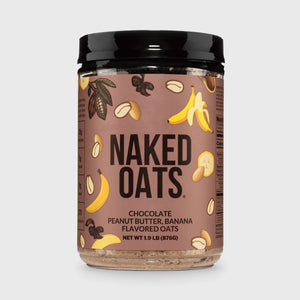If you’re looking for a new way to train cardio, you might want to check out the Norwegian 4x4 protocol.
This training protocol is fast gaining popularity, on the back of Dr Rhonda Patrick talking about it on a recent podcast appearance, and making some grand claims about its effectiveness, particularly as a way to boost VO2 max.
Keep reading and learn everything there is to know about the Norwegian 4x4 protocol, and whether it really is the game-changer people say it is, or just another passing fitness fad.
What is the Norwegian 4x4 Protocol?
The Norwegian 4x4 protocol is an interval training method, designed to put the body through extended periods of near-maximum cardiovascular output.
The goal is to perform for four minutes at near-maximum intensity, followed by a three-minute period of very light activity (e.g. walking). You repeat this pattern four times (hence 4x4 - four minutes x four sets).
It’s essentially a form of HIIT (High Intensity Interval Training), though the four-minute intervals are longer than what you’d do in a typical HIIT workout.
Benefits of Norwegian 4x4

Norwegian 4x4 is a tough, grueling workout – and in most cases, the tougher the workout, the greater the benefits.
The biggest benefit that’s often discussed with Norwegian 4x4 is increasing VO2 max, which is a measure of how well your body utilizes oxygen, and a key marker of cardiovascular health and overall longevity and wellbeing.
You’re also likely to burn a lot of calories in a short time with Norwegian 4x4, making it a very efficient way to reduce fat.
What is VO2 Max, and Why Is It Important?
Since most of the discussion around Norwegian 4x4 is about VO2 max, let’s touch briefly on why VO2 max is such an important measurement.
VO2 max is a measure of the maximum amount of oxygen your body is able to absorb and utilize while exercising.
It’s not the same as lung capacity (which is the amount of oxygen you’re able to bring into your lungs), but rather the next step in the process, which is how much of this oxygen your body is able to process and convert into energy.
VO2 max is an excellent measure of athletic ability and aerobic potential, often used by athletes in cardio-intensive sports like running and swimming.
But it’s even more relevant for general health and wellbeing. A higher VO2 max is correlated with a lower risk of all-cause mortality, and an indicator of good cardiovascular health.
VO2 max declines as we age, and improving or maintaining VO2 max has been shown to significantly improve health and wellbeing in older adults, and boost longevity.
How to Do the 4x4 Protocol

To do Norwegian 4x4 training, you need to track your time spent on each interval and, ideally, your heart rate.
Your training pattern will look like this:
- 4 minutes active (high intensity)
- 3 minutes VERY light (active recovery)
- 4 minutes active
- 3 minutes recovery
- 4 minutes active
- 3 minutes recovery
- 4 minutes active
The active periods are intended to be the maximum intensity you’re able to sustain for four sets of four minutes.
The best way to track this is by tracking your heart rate zones. You should maintain the intensity at around 75-80% of your max heart rate (zone 4).
You don’t want to go at absolute max intensity (i.e. 90%+ of your max heart rate), as you won’t be able to maintain this level for longer than 20-30 seconds.
A good marker for whether your intensity is high enough is that you shouldn’t be able to talk while in the active period.
During the recovery period, you should dial down to a very low intensity (such as walking).
Make sure you’re stretched and warmed up before you start (don’t just start going at full intensity at the very beginning of your workout).
The protocol is usually done on a treadmill, where it’s easy to switch between sprinting (for the active intervals) and walking (for the active recovery period).
However, there’s nothing stopping you from doing Norwegian 4x4 with any other type of exercise. The only difficulty is being able to maintain activity for four minutes – with many exercises, such as weighted exercises, your muscles might not be able to keep up for such a long training interval.
How Many Times a Week Should You Do Norwegian 4x4?

Norwegian 4x4 is tough, but the good news is you don’t need to do it every day.
Twice a week would be great, but even just once a week can deliver results (especially if you’re doing other workouts in between).
One notable study used the 4x4 protocol, as part of a varied training program, to judge the impact of exercise on sedentary middle-aged adults (between the ages of 45 and 64 years).
Participants only did 4x4 training once per week, alongside other exercises. At the end of the study, they had made significant improvements in VO2 max, and reduced the effective age of their heart by 20 years.
Who Should Do Norwegian 4x4?
Norwegian 4x4 can have benefits for anyone.
Increasing VO2 max is important for athletes (especially endurance athletes, such as runners and cyclists).
However, it’s also a key biomarker for overall health. Anyone who wants to maintain better health and wellbeing as they age should be interested in improving this metric, and training with the 4x4 protocol (as long as you can safely perform such high intensity exercise).
Are There Any Risks with Norwegian 4x4?
Performing exercise at a high intensity for an extended length of time will come with some risk.
There’s the risk of overexertion. That’s why it’s a good idea to track your heart rate, and ensure you’re in the 75-80% range, rather than trying to maintain 90%+ of your max HR for such a long interval.
There’s also risk of injury with high-intensity exercise, especially for those with pre-existing injuries or conditions.
Older adults, or anyone with musculoskeletal injuries should take care when starting any program of vigorous exercise.
Alternatives to Norwegian 4x4

Norwegian 4x4 is not itself a magical or unique way of training.
It’s essentially just a type of HIIT. Usually HIIT workouts go with shorter intervals, such as 30 seconds on, 30 seconds off. 4x4 just stretches these intervals out.
You can get some of the same benefits by doing a regular HIIT, such as a tabata workout.
Alternatively, if you can’t quite do the full 4x4 workout, start with intervals of at least one minute, and work your way up as your capacity improves.
Final Thoughts: Is Norwegian 4x4 a Legit Way to Improve Health and Longevity?
People may talk about Norwegian 4x4 like they do about sketchy workout fads, but in reality it’s a very simple and effective way to work out.
To say it’s simple is not to say it’s easy – you’ll be pushed to your limit, but that’s a good thing, if you want to take your athletic performance, health and wellbeing to a new level.
There are many studies showing the benefits of improving VO2 max, and the 4x4 protocol certainly appears to be an effective way of achieving this. Give it a try in your next workout and see the difference it makes.













